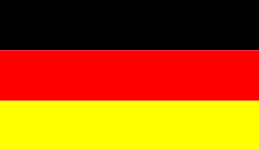 Germany is an important market and one of the biggest markest for flowers, but according to Rupert Fey of Beyond-Flora, a company that assists growers to enter German speaking markets, it is a difficult market to enter. “The Germans have a distinctive taste and above all, buying regional products is becoming increasingly popular,” he says.
Germany is an important market and one of the biggest markest for flowers, but according to Rupert Fey of Beyond-Flora, a company that assists growers to enter German speaking markets, it is a difficult market to enter. “The Germans have a distinctive taste and above all, buying regional products is becoming increasingly popular,” he says.
Regional products
Like many other countries, the demand for regional produce is increasing. The slow foods movement trend, a locally grown movement that strives to preserve traditional and regional cuisine, is now also being adapted in the ornamental sector in Germany. “Currently, several labels, like ‘ich bin von hier’ and ‘Nordfreun.de’ are being used to show customers that the products are regionally grown,” says Fey. “Besides that, it is also being stimulated by the government and the public; according to them it is better to spend your money in the neighbourhood.”
“Story telling”
Due to increasing demand for local products, it becomes more difficult for other countries to enter the German market. According to Fey, when marketing your product on this market, “story telling” is very important. “Customers want to know where the product comes from, how the product is bred and grown etc. This means that it is not wise to describe the large size of your greenhouse that grows many varieties and distributes all over the world. This will only irritate and confuse the customer,” says Fey. This also counts for the buyers you sell to. “Of course they need to know some background information of the company, but this will not work out in the long-run. Then, the story, a good and real story, is again important. It creates trust and trust is something the German buyers value.”
“Besides that, Germany is one of the biggest market for flowers and is still a country of “cheap-prices”, but this road is a dead-end and more and more buyers and consumers realize that now. They look for quality, innovative products and “something new or trendy””, says Fey.
Know the language and taste
So when telling a story, the language is very important. “Some growers, for example, think they can speak the German language, but many labels are full of misspellings, wrong words or words that are not in use anymore.” Besides that, growers may assume that the buyers and customers share a similar culture, so also taste.
According to Fey, this is a misinterpretation. “The taste of the Germans is different than that of the Dutch for example. The Dutch prefer bright and a broad collection of different colors. The Germans, in contrast, prefer more traditional colors and the retailers prefer a narrow collection of products to choose from,” says Fey.
Assisting growers
For this reason, Fey started Beyond-Flora a couple of years ago. “I used to work as a buyer for several years and I noticed these differences and the difficulties some growers or exporters have to deal with when entering German speaking countries. For this reason I started up Beyond Flora. With our Team of three we give advice in marketing, use of a strategy and communication. If a buyer says: Yes I can trust this product, grower or exporter, our job is done, at least for a while,” concludes Fey.
